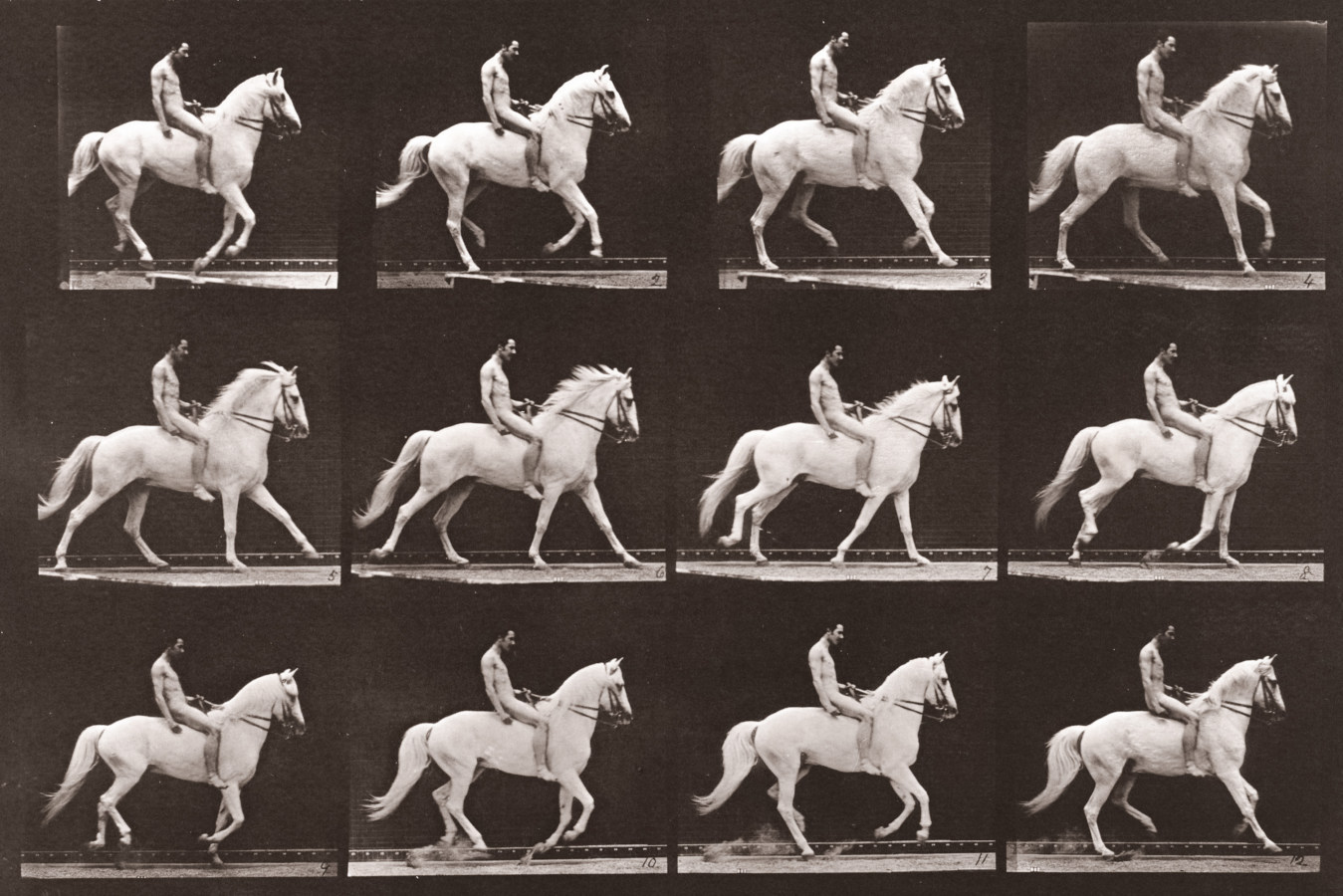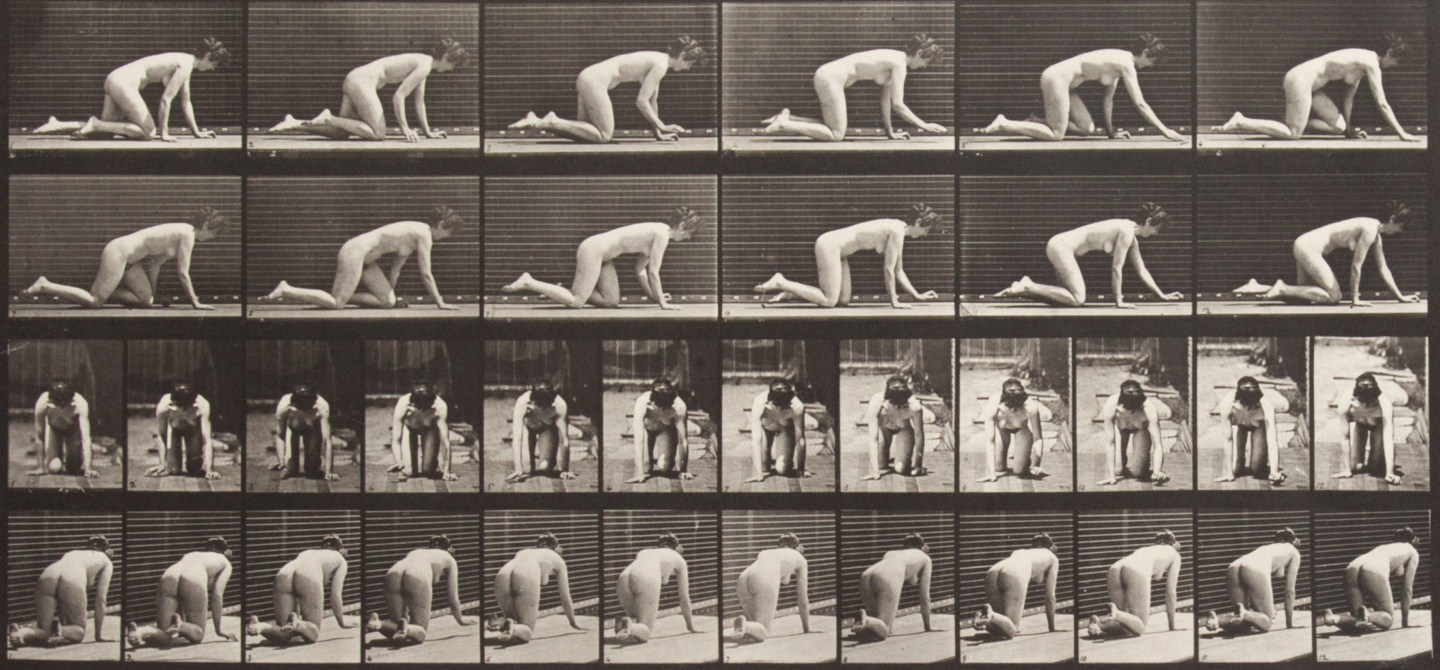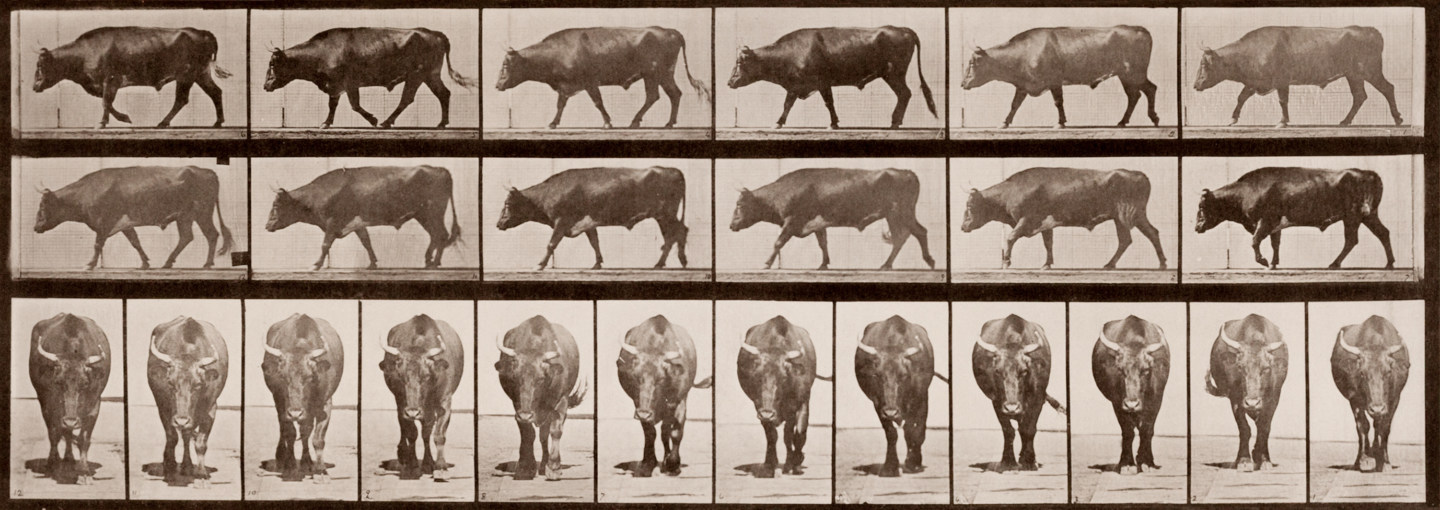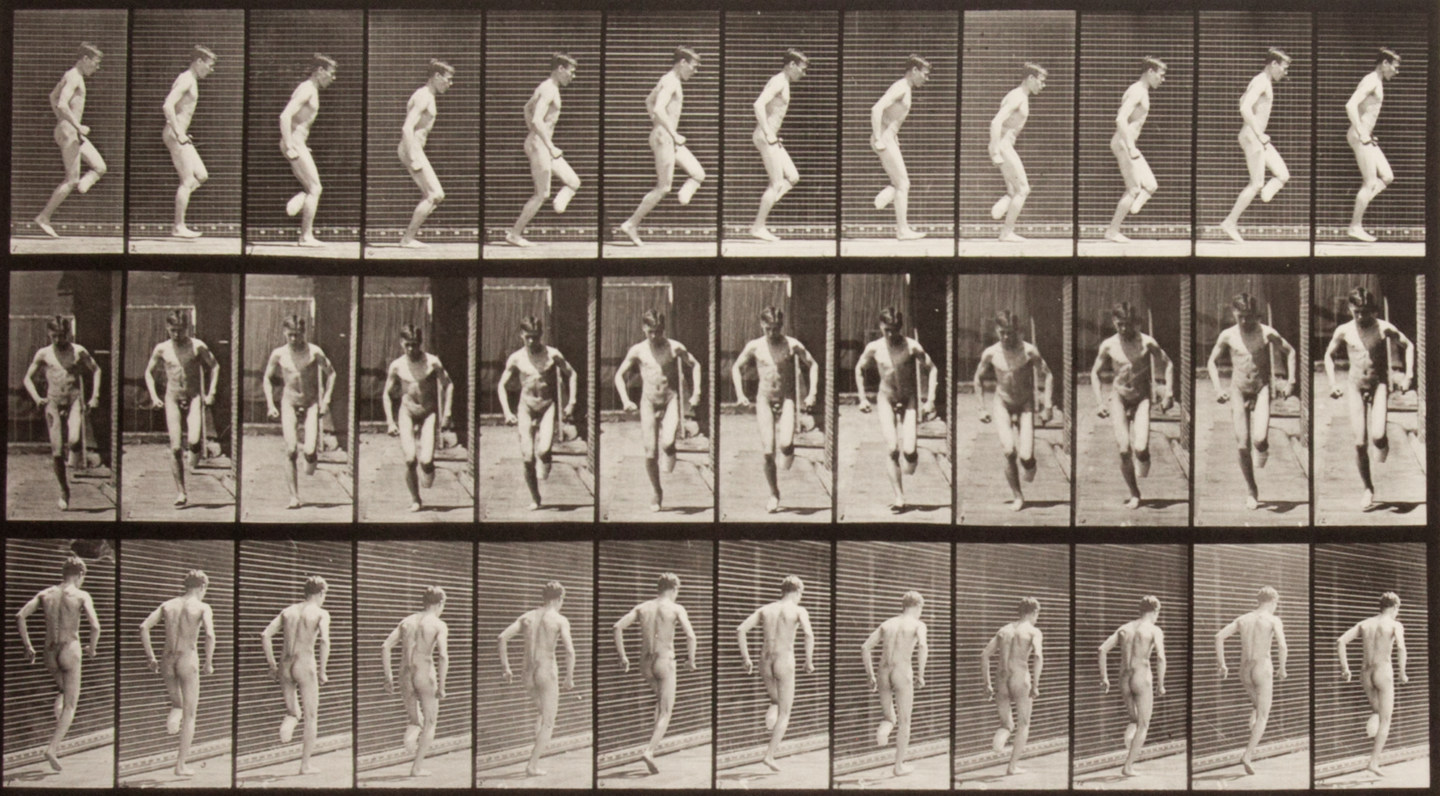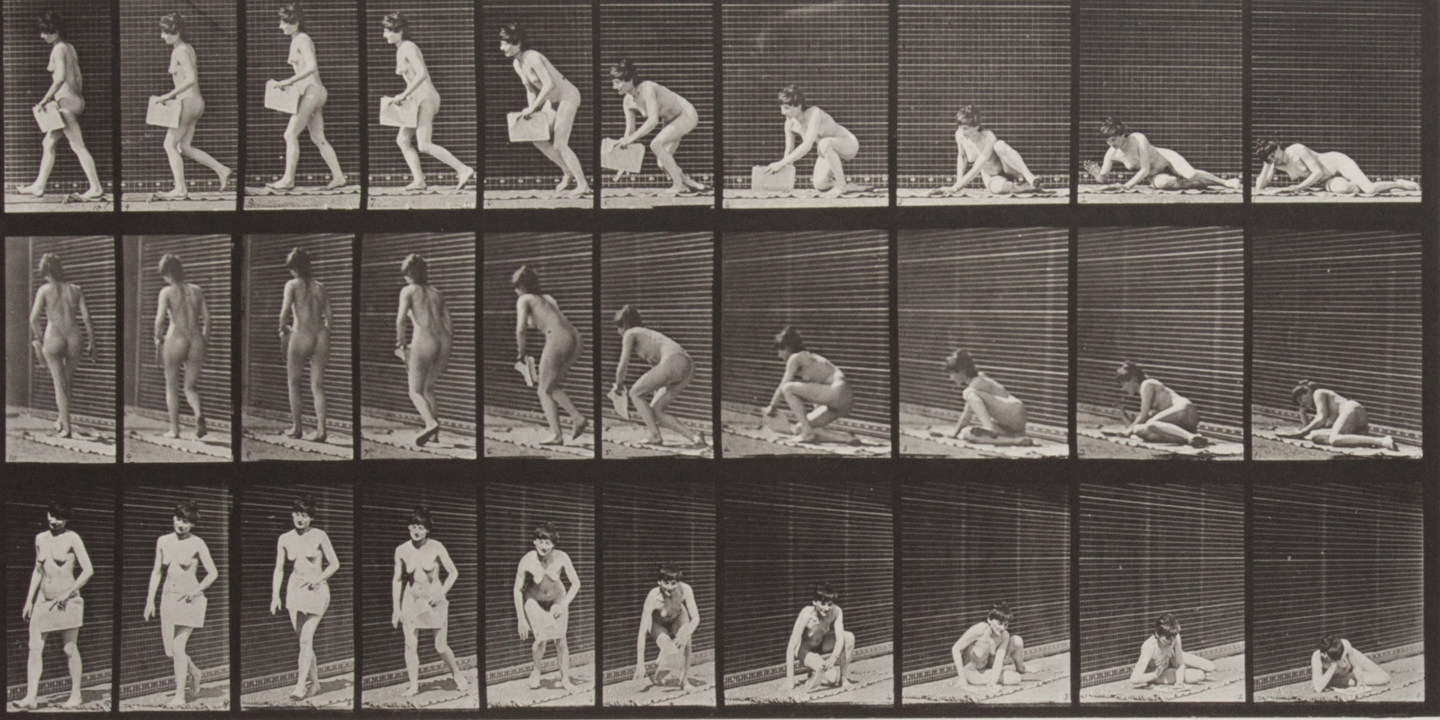Eadweard Muybridge was an English photographer important for his pioneering work in photographic studies of motion, and early work in motion-picture projection. He immigrated to the United States as a young man but remained obscure until 1868, when his large photographs of Yosemite Valley, California, made him world famous.
Muybridge’s experiments in photographing motion began in 1872, when the railroad magnate Leland Stanford hired him to prove that during a particular moment in a trotting horse’s gait, all four legs are off the ground simultaneously. His first efforts were unsuccessful because his camera lacked a fast shutter. In 1877 he returned to California and resumed his experiments in motion photography, using a battery of from 12 to 24 cameras and a special shutter he developed that gave an exposure of 2/1000 of a second. This arrangement gave satisfactory results and proved Stanford’s contention.
Muybridge gave lectures on animal locomotion throughout the United States and Europe. These lectures were illustrated with a zoopraxiscope, a lantern he developed that projected images in rapid succession onto a screen from photographs printed on a rotating glass disc, producing the illusion of moving pictures. The zoopraxiscope display, an important predecessor of the modern cinema, was a sensation at the World’s Columbian Exposition of 1893 in Chicago.
Muybridge made his most important photographic studies of motion from 1884 to 1887 under the auspices of the University of Pennsylvania. These consisted of photographs of various activities of human figures, clothed and naked, which were to form a visual compendium of human movements for the use of artists and scientists. Many of these photographs were published in 1887 in the portfolio Animal Locomotion: An Electro-Photographic Investigation of Consecutive Phases of Animal Movements. Muybridge continued to publicize and publish his work until 1900, when he retired to his birthplace.*
*Text sourced from: ‘Eadweard Muybridge’. 2017. The New Encyclopaedia Britannica. Chicago: Encyclopaedia Britannica Inc.













